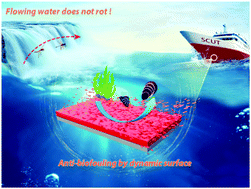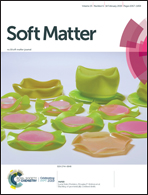Dynamic surface antifouling: mechanism and systems
Abstract
Marine biofouling is a global problem today. High efficiency and eco-friendly antifouling systems are in pressing need. In recent years, we have proposed the concept of dynamic surface antifouling (DSA). That is, a continuously changing surface can effectively prevent marine fouling organisms from landing and adhesion. Based on this strategy, we developed coatings with dynamic surfaces by using degradable polymers including polyester-polyurethane, modified polyester and poly(ester-co-acrylate). They exhibit tunable renewability, and excellent antifouling and mechanical performance. Moreover, the polymers can serve as carrier and controlled release systems of antifoulants so that they have long service life. This paper reviews the progress and trends in marine anti-biofouling, and presents the mechanism and systems of DSA.

- This article is part of the themed collection: Soft Matter Emerging Investigators


 Please wait while we load your content...
Please wait while we load your content...